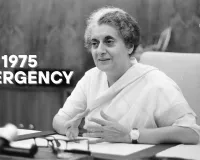Modi Govt Slashes Toll Tax by 50% on Bridge & Tunnel Routes
Digital Desk
.png)
In a major relief for commuters, the Modi government has announced a 50% reduction in toll tax on routes with bridges and tunnels. The new policy aims to cut travel costs and improve highway efficiency. Here's how the revised formula works.
Modi government has once again given a big relief to the people on toll tax. The government has implemented a new formula for toll tax. Yes… the government has reduced the toll tax by 50 percent on highway sections with bridges, tunnels and flyovers. The central government has reduced the toll tax on National Highways by 50%.
This reduction has been done especially on those highways where flyovers, bridges, tunnels and elevated stretches have been built. That is, now the cost of your journey will be reduced. The new rule of toll tax (toll reduction) has come into force. Passengers will soon start getting its benefits. This new rule, which will come into effect from July 2, 2025, will provide relief to common passengers, transporters and logistics companies.
According to an official of the National Highway Authority of India (NHAI), due to the old rules, some special infrastructure is built on every kilometer on the highway, for which you had to pay 10 times the average toll charge, so that the cost of that infrastructure can be recovered. But now in the new rules, this toll will be reduced by 50%.
Why was the toll so expensive till now
According to the earlier rules, if a large structure like a tunnel, bridge or elevated road was present on a highway section, then the toll there was calculated at 10 times the rate based on the length of that structure. This was done because the construction cost of these structures was higher than that of a normal road.
What is the new formula for reducing toll?
Let us understand this with an example. Suppose a part of the National Highway is 40 kilometers long. And this entire part has structures i.e. flyovers, bridges or tunnels. In such a situation, two methods are adopted to calculate the toll.
First method- The length of the structure is multiplied by 10 times. That is, 10×40=400 km.
Second method- The length of the entire highway portion is multiplied by 5 times. That is, 5×40=200 km.
Now, toll tax will be collected on the basis of whichever is less. That is, it is clear that toll tax will be levied only on half the length of the highway, which will reduce the toll tax by up to 50%.
Who will benefit…
Daily commuters: People who travel on highways every day will get direct relief.
Transport companies: Companies that transport goods between states and cities will get huge savings.
Bus and truck operators: There will be a reduction in costs for operators traveling long distances.
General public: Travel will now be affordable for people traveling by private vehicle.
What is the intention of the government
The objective of the government is to make toll collection transparent, practical and accessible to passengers. Besides, the objective of this decision is to provide relief to the logistics sector and make the transport system more smart.


.png)
.png)

.png)

4.png)
2.png)
3.png)
1.png)
3.png)
